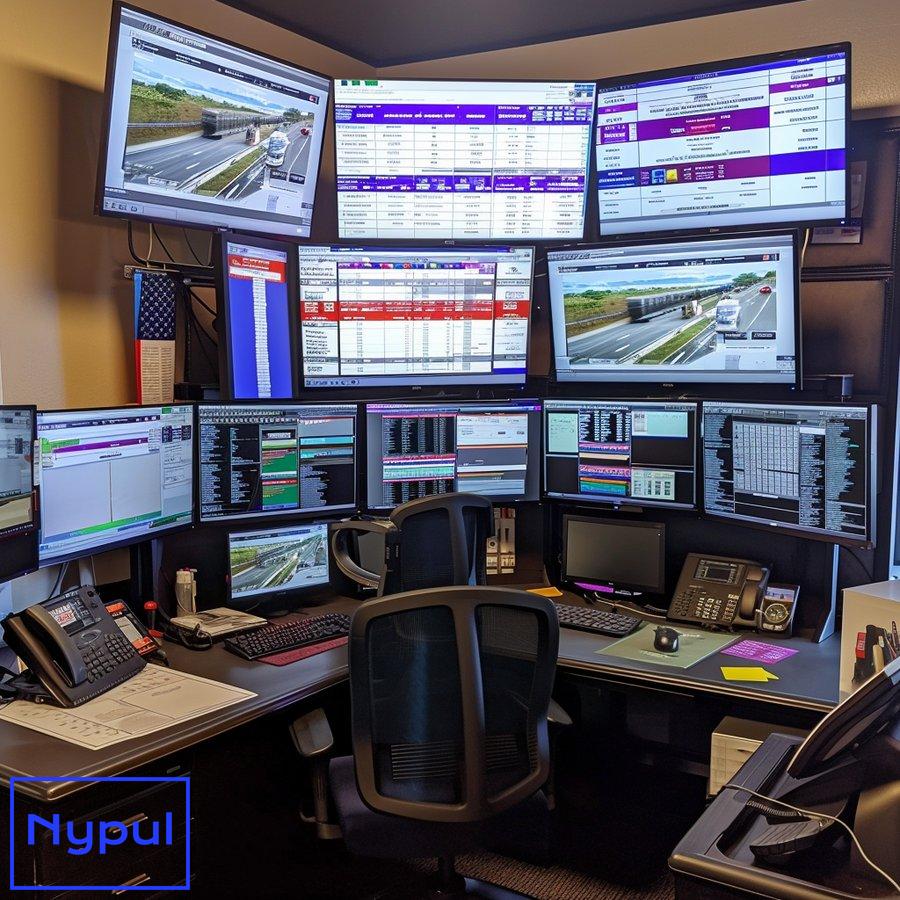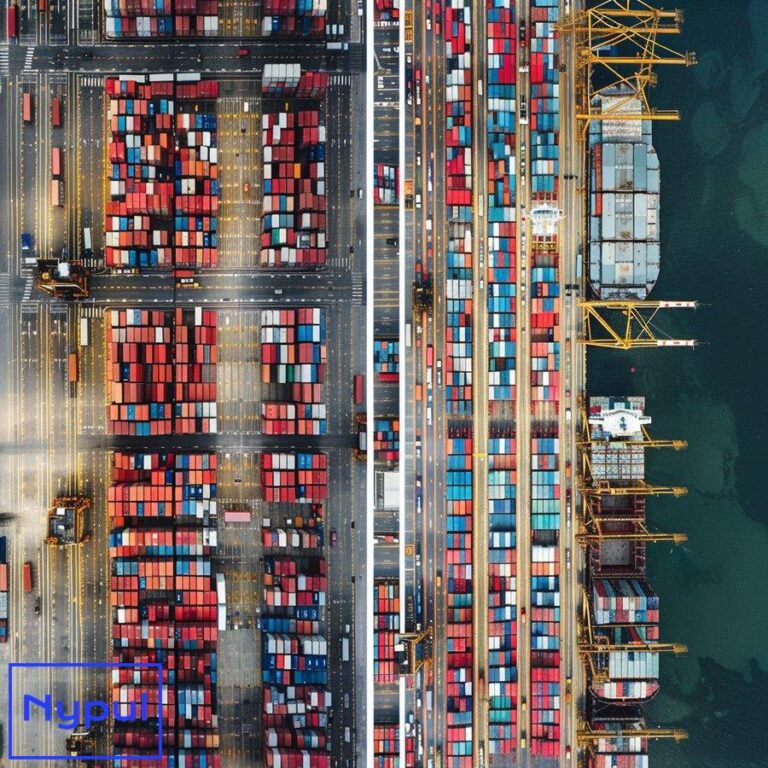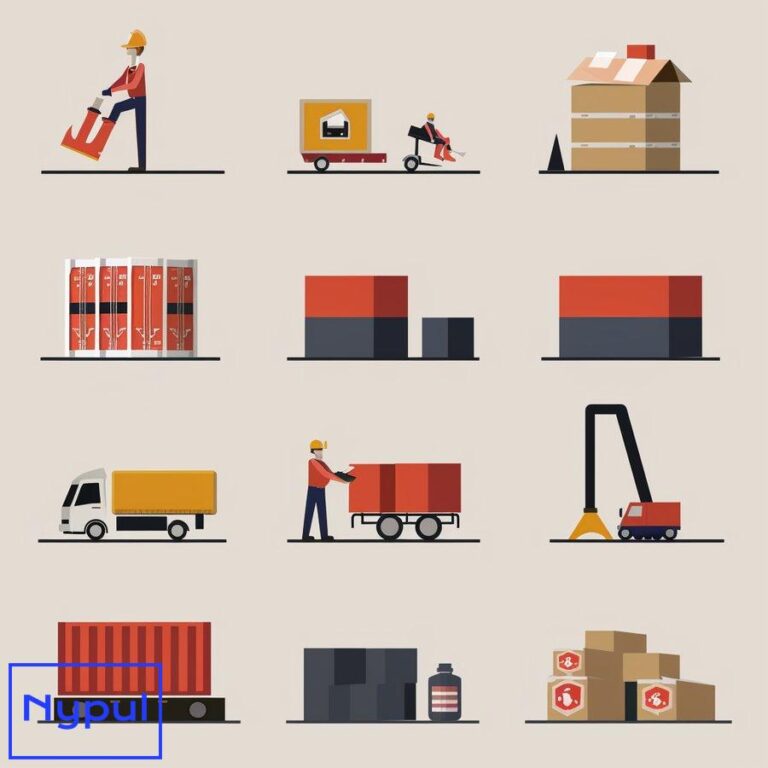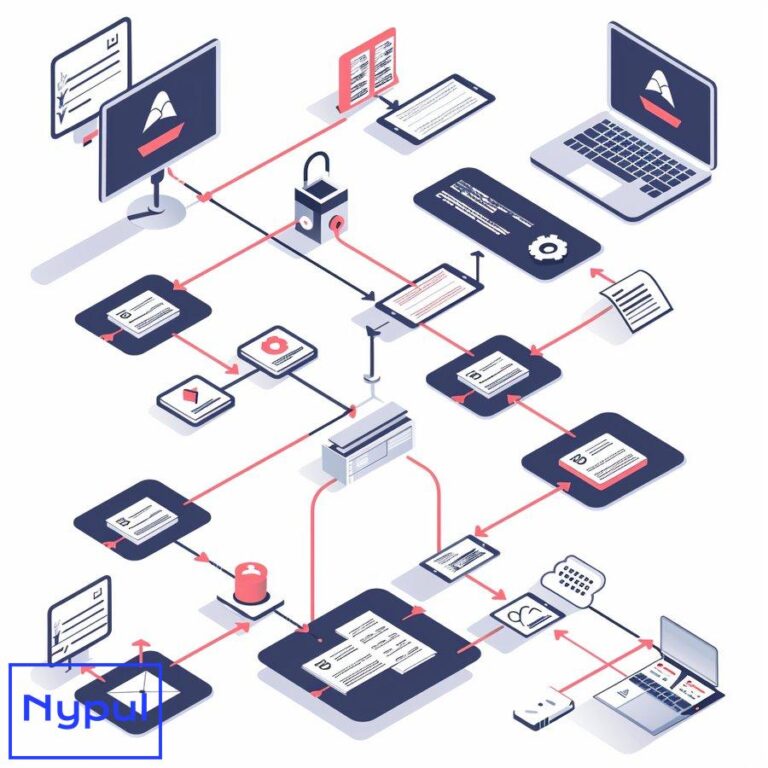What Is Required to Pick Up an Empty Container
What is empty container pickup and why is it important?

Empty container pickup refers to the process of retrieving an empty shipping container from a port, depot, or other storage location for use in transporting cargo. This critical step in the supply chain allows shippers to obtain containers needed to move their goods.
The importance of efficient empty container pickup cannot be overstated. It directly impacts the flow of global trade and the profitability of shipping operations. When empty containers are readily available and can be picked up smoothly, it enables:
Faster cargo loading and transport
Shippers can quickly obtain containers to pack their goods and get them moving toward their destination. This reduces delays in the supply chain.
Improved asset utilization
Shipping lines and container leasing companies maximize the use of their container fleets when empties can be quickly redeployed. This increases their return on investment.
Reduced congestion at ports and depots
Efficient pickup prevents empty containers from piling up and taking up valuable space at already crowded facilities.
Lower costs
Streamlined pickup processes reduce labor, equipment, and storage costs associated with managing empty containers.
Enhanced sustainability
Optimized container repositioning and utilization reduces unnecessary transportation of empties, lowering emissions.
The empty container pickup process involves several key steps:
- Booking/reserving an empty container
- Receiving pickup instructions and documentation
- Dispatching a truck to the pickup location
- Locating and inspecting the assigned container
- Loading the container onto the truck chassis
- Completing necessary paperwork
- Exiting the facility with the empty container
While this may seem straightforward, each step has its own complexities and potential pitfalls. Careful planning and execution are required to ensure smooth pickup operations.
Empty container management has become increasingly challenging in recent years due to global trade imbalances, port congestion, and supply chain disruptions. This has made efficient pickup processes even more crucial.
For example, during the COVID-19 pandemic, many empty containers became stranded in import-heavy regions like North America and Europe. This created severe shortages in export-oriented countries in Asia. Streamlining empty container pickup and repositioning became essential to alleviating these imbalances.
To illustrate the scale of empty container movements, consider these statistics:
| Region | Annual Empty Container Moves |
|---|---|
| Asia | 31 million TEUs |
| Europe | 12 million TEUs |
| North America | 10 million TEUs |
| Rest of World | 7 million TEUs |
Source: Drewry Maritime Research, 2022 data
These figures underscore the massive logistical undertaking involved in managing the global flow of empty containers. Efficient pickup processes are vital to keeping this complex system running smoothly.
For individual shippers, trucking companies, and logistics providers, mastering the empty container pickup process is essential for:
Meeting customer expectations
Reliable access to empty containers allows shippers to fulfill orders on time.
Controlling costs
Efficient pickups minimize truck wait times, detention charges, and other expenses.
Maintaining operational efficiency
Smooth pickup processes allow trucking companies to maximize the productivity of their drivers and equipment.
Complying with regulations
Proper handling of empty container pickup ensures compliance with customs, safety, and other regulatory requirements.
In the following sections, we’ll explore the key elements required for successful empty container pickup operations. From documentation and operational preparation to equipment needs and regulatory compliance, understanding these factors is crucial for anyone involved in container logistics.
What documentation is required for picking up an empty container?
Proper documentation is crucial for the smooth and legal pickup of empty containers. The specific documents required may vary depending on the port, terminal, shipping line, and local regulations. However, several key documents are commonly needed across most pickup scenarios:
Equipment Interchange Receipt (EIR)
The EIR is a critical document that records the transfer of the container from the terminal or depot to the trucker. It typically includes:

- Container number
- Pickup date and time
- Condition of the container
- Trucker’s information
- Terminal/depot information
The EIR serves as proof of pickup and documents the container’s condition, protecting both parties in case of disputes.
Booking Confirmation or Release Order
This document, issued by the shipping line or freight forwarder, authorizes the pickup of a specific empty container. It usually contains:
- Booking number
- Container number and type
- Pickup location
- Valid pickup date range
- Shipper information
The booking confirmation ensures that the correct container is released to the authorized party.
Driver’s License and TWIC Card
The truck driver must present a valid commercial driver’s license. In U.S. ports, a Transportation Worker Identification Credential (TWIC) card is also required for access to secure areas.
Truck and Chassis Information
Documentation showing the truck’s registration and insurance, as well as the chassis number (if applicable), is often required.
Terminal-Specific Access Documents
Many terminals require pre-registration or have their own access procedures. This may involve:
- Terminal access cards
- Appointment confirmations
- PIN numbers for automated gates
Customs Documentation
For international shipments, customs-related documents may be necessary, even for empty containers. This can include:
- Customs release forms
- Export declarations (for certain destinations)
Empty Container Survey Form
Some terminals or shipping lines require a completed survey form documenting the container’s condition before pickup.
Letter of Authorization
If the pickup is being performed by a third-party trucking company, a letter authorizing them to act on behalf of the shipper or freight forwarder may be needed.
To illustrate the typical documentation flow, consider this simplified process:
- Shipper books empty container with shipping line
- Shipping line issues booking confirmation
- Shipper arranges pickup with trucking company
- Trucking company registers for terminal access
- Driver arrives at terminal with required documents
- Terminal verifies documents and releases container
- EIR is generated upon container pickup
While these are the most common documents, it’s important to note that requirements can vary. Factors influencing documentation needs include:
Container ownership
Carrier-owned containers (COC) may have different documentation requirements than shipper-owned containers (SOC).
Port/terminal regulations
Each port and terminal can have unique documentation rules based on local laws and operational procedures.
Type of shipment
Special documentation may be required for hazardous materials, temperature-controlled containers, or other specialized cargo types.
Customs regulations
Countries have varying customs requirements, even for empty containers, which can impact necessary documentation.
To ensure smooth pickup operations, consider these best practices for documentation management:
Advance preparation
Gather and organize all required documents well before the scheduled pickup date.
Digital copies
Keep digital copies of all documents easily accessible on mobile devices as backup.
Double-check accuracy
Verify that all information on the documents is correct and matches the booking details.
Stay informed
Regularly check with terminals, shipping lines, and local authorities for any changes in documentation requirements.
Implement document management systems
Use software solutions to streamline document handling and reduce errors.
By understanding and properly managing the documentation requirements, you can significantly reduce delays, avoid penalties, and ensure compliance in the empty container pickup process. This attention to detail sets the foundation for efficient and trouble-free container logistics operations.
How should you prepare operationally for container pickup?

Operational preparation is key to ensuring a smooth and efficient empty container pickup process. Proper planning and execution can save time, reduce costs, and minimize potential issues. Here’s a comprehensive guide to operationally preparing for container pickup:
Schedule and Timing
Appointment booking
Many terminals require specific appointment slots for container pickup. Book these well in advance to secure preferred times.
Off-peak hours
Consider scheduling pickups during less busy periods to reduce wait times and congestion.
Buffer time
Allow extra time in your schedule for unexpected delays or complications.
Route Planning
Traffic analysis
Research typical traffic patterns and plan routes that avoid peak congestion times.
Construction awareness
Stay informed about road construction or closures that might affect access to the terminal.
Alternative routes
Have backup routes prepared in case of unexpected road issues.
Vehicle and Equipment Preparation
Maintenance checks
Ensure all trucks and chassis are in good working condition through regular inspections and maintenance.
Fuel levels
Verify that vehicles have sufficient fuel to complete the pickup and subsequent transport.
Proper chassis
Confirm that the chassis is compatible with the container size and type being picked up.
Driver Readiness
Document review
Brief drivers on all required documentation and ensure they have complete and accurate paperwork.
Terminal familiarity
Provide drivers with information about terminal layout and procedures, especially for unfamiliar locations.
Communication devices
Equip drivers with reliable communication tools to stay in touch with dispatch and report issues.
Load Planning
Weight restrictions
Be aware of road weight limits and ensure the combined weight of truck, chassis, and empty container complies with regulations.
Container specifications
Verify that the container type and size match the booking and are suitable for the intended cargo.
Customs and Regulatory Compliance
Customs clearance
If applicable, ensure all customs procedures for empty container pickup are completed in advance.
Permit verification
Check that all necessary permits for oversized or specialized containers are in order.
Terminal-Specific Preparations
Pre-registration
Complete any required terminal pre-registration processes for both company and individual drivers.
Payment arrangements
Set up payment methods accepted by the terminal for any applicable fees.
Operational Communication
Internal coordination
Ensure clear communication between dispatch, drivers, and any other involved parties in your organization.
External notifications
Inform relevant stakeholders (e.g., shippers, freight forwarders) about pickup schedules and any potential issues.
Contingency Planning
Backup drivers
Have standby drivers available in case of last-minute personnel issues.
Equipment redundancy
Maintain spare chassis or trucks to quickly address equipment failures.
Issue escalation process
Establish clear procedures for drivers to report and escalate problems encountered during pickup.
To illustrate the importance of operational preparation, consider these statistics on container pickup efficiency:
| Preparation Level | Average Pickup Time | Successful First Attempt |
|---|---|---|
| Minimal | 120 minutes | 65% |
| Moderate | 90 minutes | 80% |
| Comprehensive | 60 minutes | 95% |
Source: Industry survey of 500 trucking companies, 2023
These figures demonstrate that thorough operational preparation can significantly reduce pickup times and increase the likelihood of successful first-attempt pickups.
Technology Integration
Leveraging technology can greatly enhance operational preparation:
Terminal apps
Many ports offer mobile apps providing real-time information on container availability, traffic conditions, and wait times.
GPS tracking
Use GPS systems to optimize routes and monitor truck locations in real-time.
Electronic logging devices (ELDs)
Utilize ELDs to accurately track driver hours and ensure compliance with hours-of-service regulations.
Yard management systems
Implement software to efficiently manage container inventory and movements within your own facilities.
Environmental Considerations
As sustainability becomes increasingly important in logistics, consider these eco-friendly operational preparations:
Emissions reduction
Plan routes to minimize idle time and reduce unnecessary mileage.
Alternative fuels
Consider using trucks powered by cleaner fuels like natural gas or electricity for container pickup.
Noise mitigation
Be aware of noise regulations, especially for early morning or late night pickups in urban areas.
By thoroughly addressing these operational aspects, you can create a robust and efficient system for empty container pickup. This level of preparation not only streamlines your own operations but also contributes to the overall efficiency of the port and terminal ecosystem. Remember, in the world of container logistics, proper preparation is the key to success.
What equipment and vehicle specifications are necessary?
Selecting the right equipment and vehicles for empty container pickup is crucial for efficiency, safety, and compliance. The specifications required can vary based on the container type, local regulations, and operational needs. Here’s a comprehensive overview of the necessary equipment and vehicle specifications:
Trucks

Power requirements
Trucks must have sufficient horsepower to handle the weight of both the chassis and the empty container. Typically, a minimum of 350-400 horsepower is recommended.
Transmission
Automated or manual transmissions are acceptable, but automated transmissions are becoming more common due to improved fuel efficiency and ease of operation.
Axle configuration
The most common configurations for container hauling are:
– 6×4 (three axles, with two driven axles)
– 4×2 (two axles, with one driven axle)
The choice depends on weight requirements and local regulations.
Fuel capacity
Sufficient fuel tank capacity to complete round trips without refueling is essential. Many trucks used for container pickup have fuel capacities of 150-200 gallons.
Chassis
Length
Chassis must accommodate the container size:
– 20-foot chassis for 20-foot containers
– 40-foot chassis for 40-foot containers
– 45-foot chassis for 45-foot containers
– Extendable chassis that can handle multiple container sizes
Weight capacity
The chassis must be rated to handle the combined weight of the empty container and any potential cargo. Typical weight capacities range from 30,000 to 60,000 pounds.
Twist locks
Secure twist lock mechanisms are essential for safely securing containers to the chassis.
Suspension
Air ride suspension is preferred for smoother transport and reduced wear on containers and equipment.
Container Handling Equipment
While not always necessary for simple pickup operations, some situations may require additional container handling equipment:
Sidelifters
These specialized trailers can load and unload containers without external lifting equipment, useful for operations away from port facilities.
Reach stackers
For yard operations or smaller terminals, reach stackers provide flexibility in container handling and stacking.
Terminal tractors
Also known as yard trucks, these are used for moving containers within terminal facilities.
Safety Equipment
Lights and reflectors
Proper lighting and reflective materials as required by local transportation regulations.
Backup alarms
Audible warning systems for reverse operations.
Fire extinguishers
Properly rated and easily accessible fire extinguishers.
Personal protective equipment (PPE)
Hard hats, safety vests, steel-toed boots, and other necessary PPE for drivers.
Communication Equipment
Mobile devices
Smartphones or tablets for accessing terminal apps, GPS navigation, and communication.
Two-way radios
For communication within terminals or with dispatch.
Tracking systems
GPS-based systems for real-time location tracking and route optimization.
To illustrate the importance of proper equipment specifications, consider this comparison of different chassis types:
| Chassis Type | Container Sizes | Weight Capacity | Typical Use Case |
|---|---|---|---|
| 20-foot fixed | 20-foot | 30,000-35,000 lbs | Short-haul, single size operations |
| 40-foot fixed | 40-foot | 40,000-45,000 lbs | Long-haul, standard container transport |
| Extendable | 20-foot, 40-foot, 45-foot | 45,000-60,000 lbs | Versatile operations handling multiple sizes |
| Gooseneck | 40-foot, 45-foot | 50,000-60,000 lbs | Heavy-duty, specialized transport |
Specialized Equipment for Specific Container Types
Reefer containers
Trucks handling refrigerated containers need:
– Electrical connections to power the container’s cooling unit
– Monitoring systems to track temperature during transport
Tank containers
Vehicles for tank containers require:
– Specialized chassis designed for tank container mounting
– Safety equipment for handling potentially hazardous materials
Open-top containers
Equipment for open-top containers should include:
– Tarping systems to cover the container during transport
– Tie-down points for securing the tarp
Flat rack containers
Handling flat rack containers necessitates:
– Adjustable twist locks to accommodate various configurations
– Additional securing equipment like chains and binders
Environmental Considerations
As environmental regulations become stricter, consider these eco-friendly equipment specifications:
Emissions standards
Ensure trucks meet or exceed current emissions standards (e.g., Euro VI, EPA 2010 or newer).
Alternative fuel vehicles
Consider electric, hydrogen fuel cell, or natural gas-powered trucks for reduced emissions.
Aerodynamic features
Utilize aerodynamic truck and chassis designs to improve fuel efficiency.
Noise reduction
Choose equipment with enhanced noise reduction features, especially for urban operations.
Maintenance and Durability
Corrosion resistance
Given the exposure to salt air in port environments, choose equipment with good corrosion resistance.
Easy maintenance access
Select trucks and chassis designs that allow for easy maintenance to minimize downtime.





